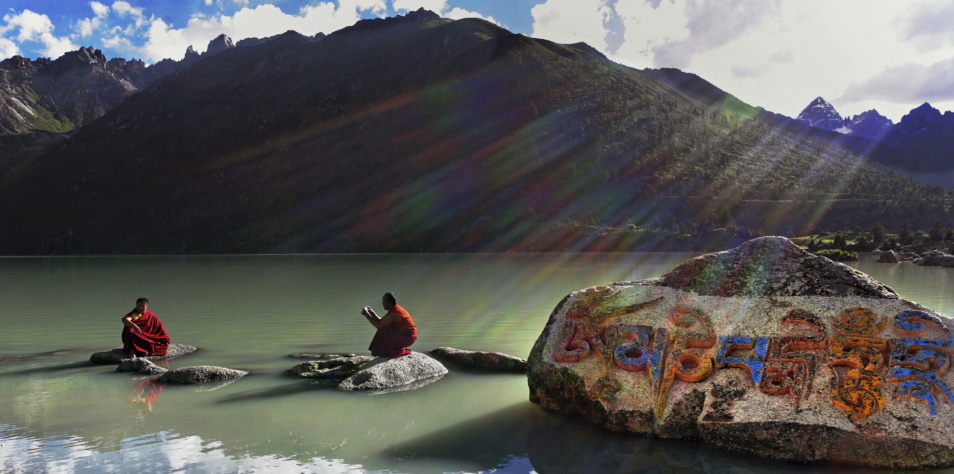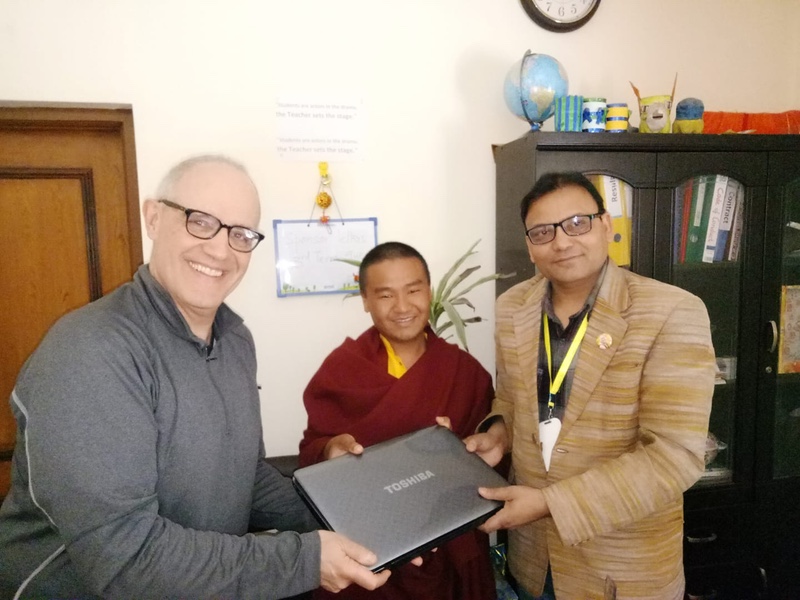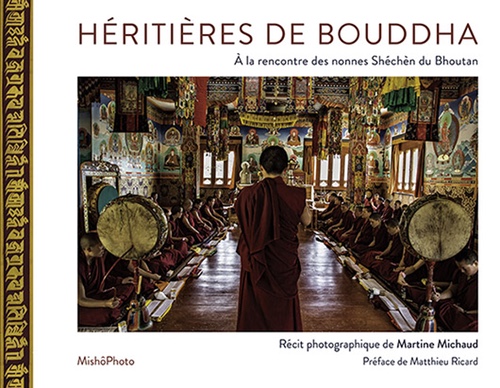#23 May 2018 Newsletter
Quick links in this edition:
Reflections on othe TseChu Dance Festival (Cham)
Teachers’ Update
Rabjam Rinpoche’s Commitment to Buddhist Communities
Matthieu Ricard on the Publication of the Rinchen Terdzö
The Gift of Giving
Shechen Nuns Through the Lens
Other Links
Reflections on the TseChu Dance Festival (Cham)
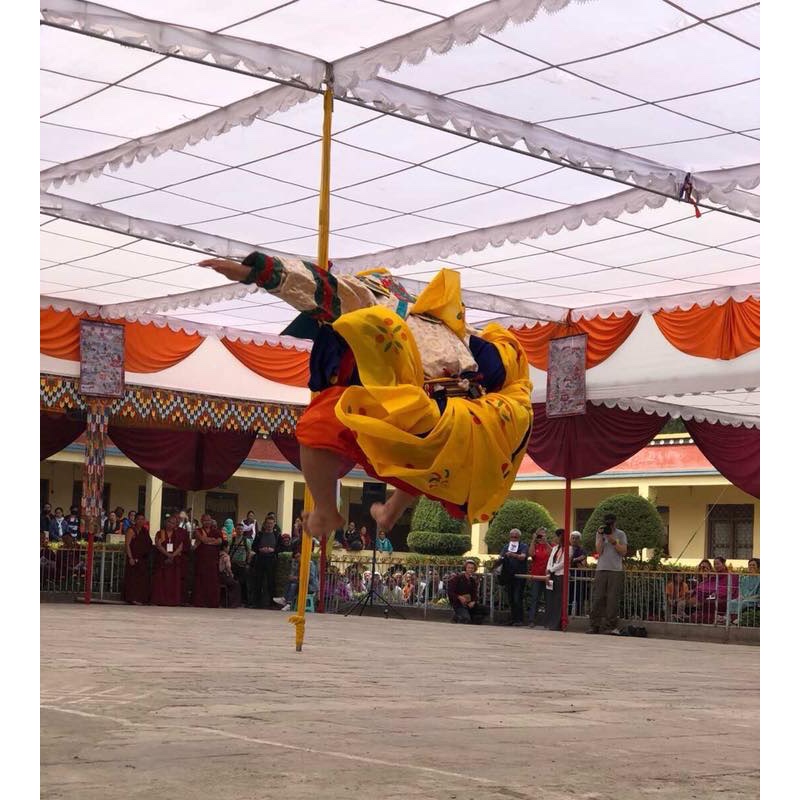
The five weeks of ceremonies (drupchens) following Losar (New Year) and presided over by Rabjam Rinpoche culminated on March 26 with the TseChu dances. We asked one of the spectators, Helen Tworkov, to write about it.
“The annual lama dances in the courtyard of Shechen Monastery offered something special for everyone—the Shechen community which surely took immense gratification from the sublime grace and training of its monks, both the dancers and the musicians; followers familiar with the detailed symbolism of the extravagant costumes and refined gestures; and the little monks and local children who were delighted by the clowns. Spectators from the Tibetan community took heart in the authentic continuity of their heritage, and visitors like myself were thrilled at our good fortune to be in Boudanath for this legendary festival.
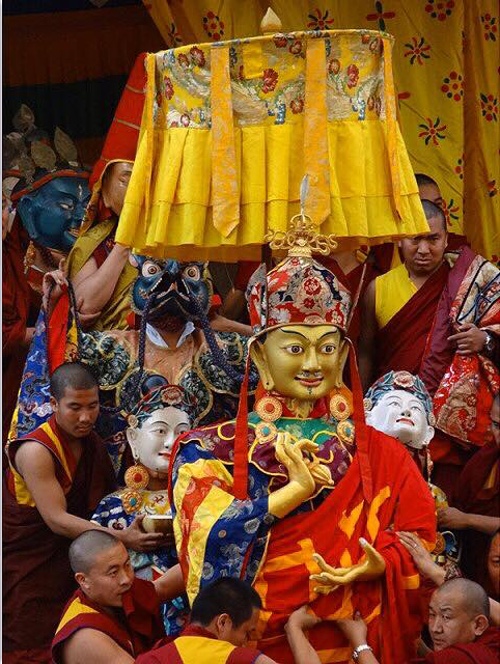
For me, it was a day shared with new and old friends, which seemed a perfect reflection of this reenactment of Padmasambhava coming to Tibet: the pageant did not feel merely traditional, but rather simultaneously ancient and contemporary. Here we were, gathered together from all over the world, to contemplate a moment which initiated a new era in Tibet; and before our very eyes, and with the magic of theatrical display, that new era of some twelve hundred years ago became our own new beginning, a regeneration of personal and collective aspirations. All together, in one voice that transcended time and space and borders and boundaries, we continued to offer prayers for the defeat of ignorance and the dissemination of peaceful forces—thus reaffirming that history is the present moment.”
Written by Helen Tworkov, founder of Tricycle Magazine, and co-author of an upcoming new book with Mingyur Rinpoche.
Teachers’ Update
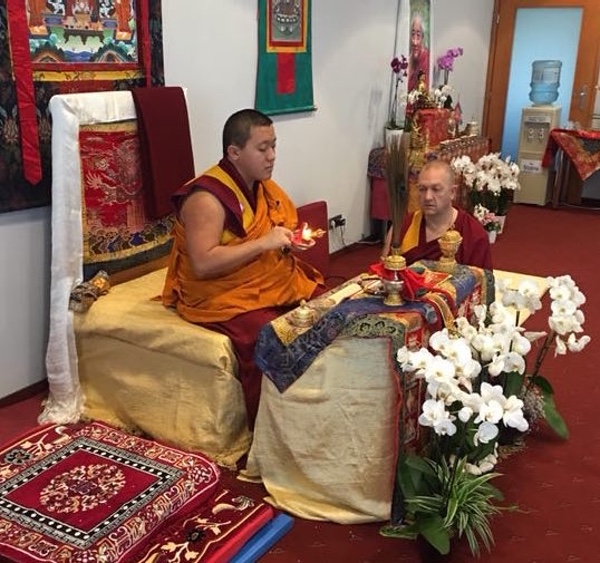
February through March is a period of heightened activity at Shechen. The shedra exams have just been completed, and the annual drupchens begin, with the full monk body, nuns, and visitors involved.
In April, Khyentse Yangsi Rinpoche gave empowerments and teachings for a week at the annual Shechen Seminar in Croatia. Lama Lungrik Nyima and Khenpo Gyurmed Tsultrim from Shechen Monastery in Nepal also gave teachings to both the advanced retreat and the public seminar participants. Thank you to Sean Price for translating, overseeing, and also teaching throughout the whole seminar.
After the annual ceremonies and Shechen General Meeting in Nepal, Rabjam Rinpoche visited Mindroling Monastery in India. He will be in Bhutan for the next few months presiding over drupchens and teaching the Shechen nuns.
Rabjam Rinpoche Helps Remote Buddhist Communities
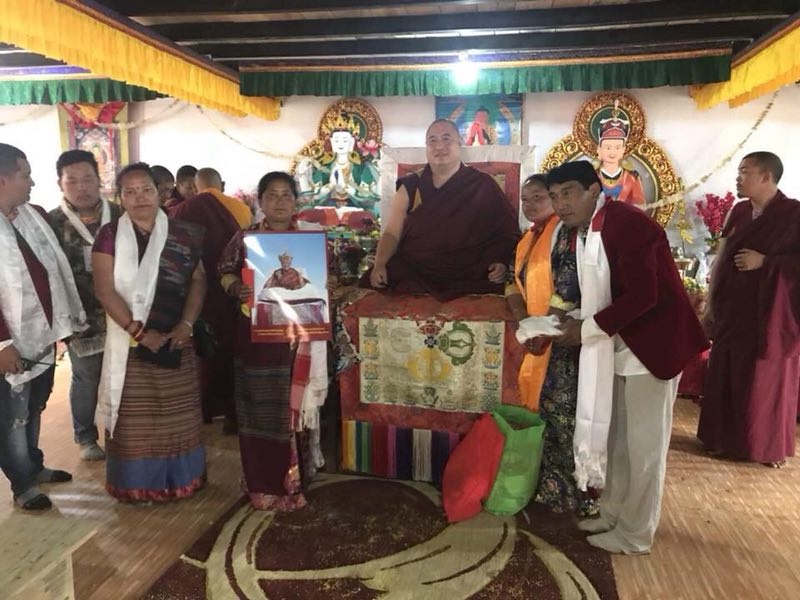
Many Nepalese Buddhist communities that have lost their connection to Buddhism during the last few generations are now trying to revive and reconnect with their ancestral traditions and religion. Shechen Monastery has been playing a small, yet important, role in helping them achieve that by responding to requests for teachers to come to remote Buddhist communities.
Ramechhap, a community with a majority of Tamang people, is located in a remote area that takes seven hours by road to reach from Kathmandu. During the past three years, Shechen has been sending two Lopons to teach Buddhism there. They conduct a weekly teaching program for the general public and a daily class for local women, called Ama Tsokpa, that teaches them how to read texts and chant Avalokiteshvara mantras.
This program has been very successful and inspired the local people to build a small temple that can host up to 200 people and has resident rooms for lamas and visiting teachers.
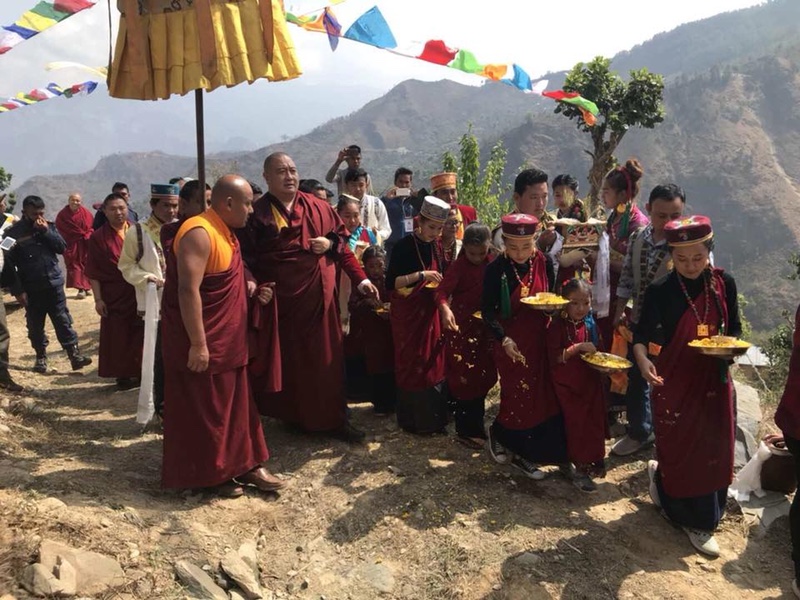
Rabjam Rinpoche recently visited Ramechhap to inaugurate the new temple. To the great delight of the community he met with all of them and offered teachings and advice.
Programs like these are greatly appreciated and more and more Buddhist communities throughout Nepal are requesting basic teachings on Buddhism.
Shechen Monastery is committed to help in the preservation of Buddhism in these isolated communities.
Matthieu Ricard on the Publication of the Rinchen Terdzö
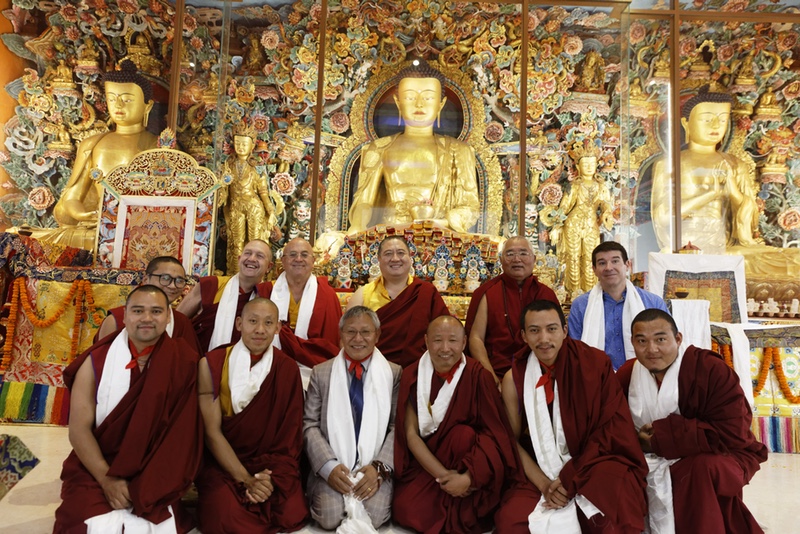
On the 29th of March, 2018, a joyful celebration led by Shechen Rabjam Rinpoche was held at Shechen monastery in Nepal to commemorate the completion of the new edition and publication of the 71 volumes of the Rinchen Terdzö Chenmo, The Great Treasury of Rediscovered Teachings. A thanksgiving ceremony was performed to express deep gratitude to all those who tirelessly worked on this project for 13 years.
A very special homage was paid to Dagpo Tulku Rinpoche, who spent all these years, working with unflinching perseverance and expertise at Shechen retreat center, Pema ösel Ling, at Namo Buddha in Nepal, to bring this edition of the Rinchen Terdzö to an unparalleled level of excellence. Thanksgiving offerings were also made to Dagpo Rinpoche’s main assistant, to the seven monks who over many years worked on imputing the texts at the monastery in Kathmandu and to Eric Colombel and other members of Tsadra Foundation, who were honored for their unflinching generosity in sponsoring this monumental work fully.
Why Make a New Edition of the Rinchen Terdzö?
In 2006, Rabjam Rinpoche and I decided that one of the best offerings we could do to honor Kyabje Dilgo Khyentse Rinpoche’s memory would be to complete a project that would have pleased him and fulfilled his aspirations for all sentient beings, and that was to undertake a carefully checked and edited version of the Rinchen Terdzö. During his lifetime, Kyabje Dilgo Khyentse Rinpoche (1910-1991) gave the transmission of the Rinchen Terdzö five times.
Dilgo Khyentse Rinpoche had inspired the publication of a previous edition, which was printed in Delhi in the late 1970s by Rinpoche’s treasurer, Lama Ngodrup, and his team. This first Indian edition was published thanks to the matchless support of E. Gene Smith and the United States Library of Congress. But even though it served a most beneficial purpose, Khyentse Rinpoche was not quite satisfied with it since many of the wood-block prints were not clear enough for direct reproduction and had to be calligraphed rather hastily using semitransparent tracing paper that created many unfortunate mistakes.
We therefore felt that it would be highly desirable to prepare a new edition. Kyabje Dudjom Rinpoche also once told Dagpo Rinpoche that it would take at least a year for ten expert scholars to correct the original Tibetan editions properly of the Rinchen Terdzö.
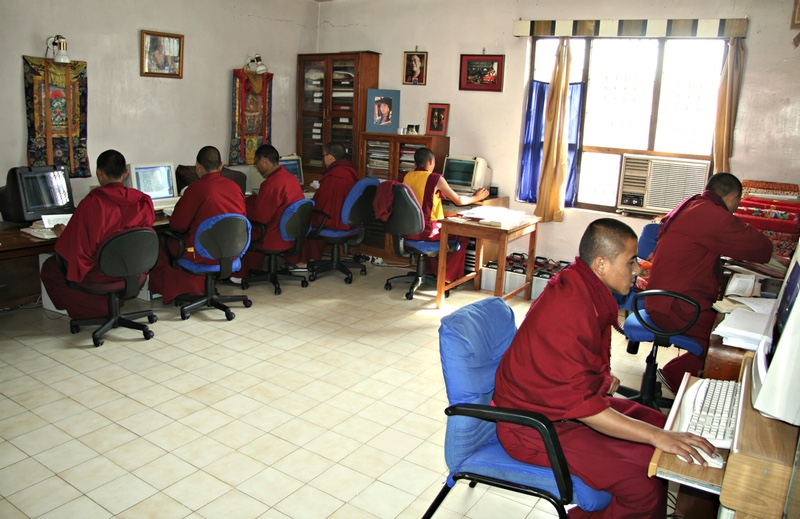
In our case it took thirteen years to one accomplished scholar and his team to accomplish this task. Dagpo Rinpoche meticulously tracked down mistakes, omissions, duplications, and other inconsistencies. He carefully compared the two editions that existed in Tibet (from Palpung and Tsurphu monasteries) and on many instances went back to the original sources of the termas included in the Great Treasury. He sometimes spent up to two months on a single volume, merely taking one afternoon of rest every two weeks. During all these years, he was faithfully assisted by Tsewang Rigzin who did the input of all the corrections under Rinpoche’s close supervision.
All along these years, a team of Shechen monks worked hard to input the 71 volumes twice (this allows to run a software that highlights the difference between the two inputs and thus to eliminate typing mistakes). Under the supervision of Lopön Samten Dorje, this team included Sonam Wangpo, Ugyen Phuntsok, Pema Tsechok Dorje, Do-ngak Tenzin, Karma Tenzin, Tenzin Wangpo, as well as the Khenpos and Lopöns of Shechen Philosophical College. Tulku Rigzin Pema also kindly did a first round of proofreading.
Konchog Lhadrepa, the master painter and head of Shechen Tsering Art School, skillfully drew the illustrations and the dakini scripts found in the volumes. In addition, he prepared a new set of drawings for over one hundred large-size yantras and chakras, which have now been included for the first time in the Rinchen Terdzö collection.
In India Samdrup Tshering who is in charge of Shechen Publications in Delhi carefully supervised the printing. Tony Duff kindly provided the TibetDoc software that has been essential for realizing this work.
A Short Presentation of the Rinchen Terdzö
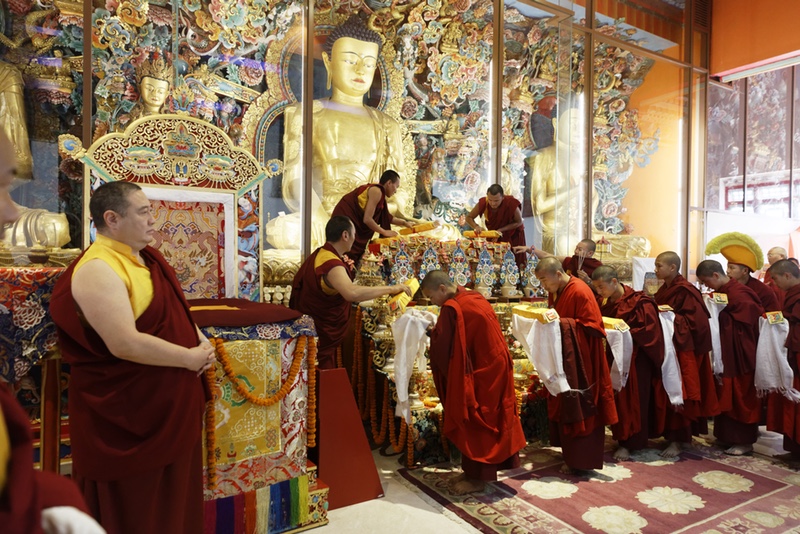 The Rinchen Terdzö Chenmo is the largest of the Five Treasuries that Jamgön Kongtrul the Great (1813-1899) compiled throughout his life. This extraordinary collection is comprised of the main Rediscovered Treasures (gter ma) of Tibetan Buddhism and the texts necessary to bestow the related empowerments and explanations to practice them.
The Rinchen Terdzö Chenmo is the largest of the Five Treasuries that Jamgön Kongtrul the Great (1813-1899) compiled throughout his life. This extraordinary collection is comprised of the main Rediscovered Treasures (gter ma) of Tibetan Buddhism and the texts necessary to bestow the related empowerments and explanations to practice them.
At the same time, the master Jamyang Khyentse Wangpo (1820-1892) traveled for thirteen years throughout Central and Eastern Tibet to collect precious texts and receive the transmissions for the many lineages that had become nearly extinct and held by only a few people. He then gave all these transmissions to Jamgön Kongtrul and others.
The actual redaction of the Rinchen Terdzö was done by Jamgön Kongtrul at the monastery-hermitage of Dzongshö Deshek Dupa, a secluded mountain retreat located between Dzongsar and Kathok in Eastern Tibet. Wooden blocks were then carved at Palpung Monastery creating a 60-volume edition. A new set of revised wooden blocks was carved at Tsurphu Monastery with three additional volumes, under the supervision of the XVth Karmapa, Khakyap Dorje, (1871-1922).
May this new edition of the Rinchen Terdzö Chenmo be dedicated to the benefit of all sentient beings, to the perpetuation of the Dharma, which is the source of all temporary and ultimate happiness, to the long life and compassionate activities of all the great holders of the Buddha’s teachings, and especially to the flourishing of the beneficial activities of the reincarnation of Kyabje Dilgo Khyentse Rinpoche, Yangsi Rinpoche, Ugyen Tenzin Jigme Lhundrup, and of Kyabje Shechen Rabjam VII, Shedrup Chökyi Senge.
Written by Matthieu Ricard, Coordinator of the Rinchen Terdzö project.
Gift of Giving
Each year, people from all over the world express their generosity by supporting Dilgo Khyentse Fellowship. These gifts help the children, monks, and nuns living at Shechen in Nepal, India and Bhutan, and also support the framework and foundation that allows powerful spiritual and cultural traditions to continue.
Over the last few years, Edmond Antoine and Altruistic Odyssey have taken a special interest in the Shechen School. We asked Edmond, President of Altruistic Odyssey, what inspired them to choose the school as one of their main projects:
“Our mission at Altruistic Odyssey is to support projects on education and health in Nepal. Shechen Monastery’s vision to offer a modern education to young monks by giving them a secular public education as well as a religious one a very creative approach. We trust the way the school is managed with professionalism, effectiveness and compassion. We financed the computers in order to help students access knowledge in an easier and faster way.
As the school is expanding and welcoming new students and higher grades, we are supporting the creation of a library as well. We are proud to continue to be at the service of the Shechen Monastery’s vision to help more needy children of Nepal to gain a modern education.”
~ Edmond Antoine
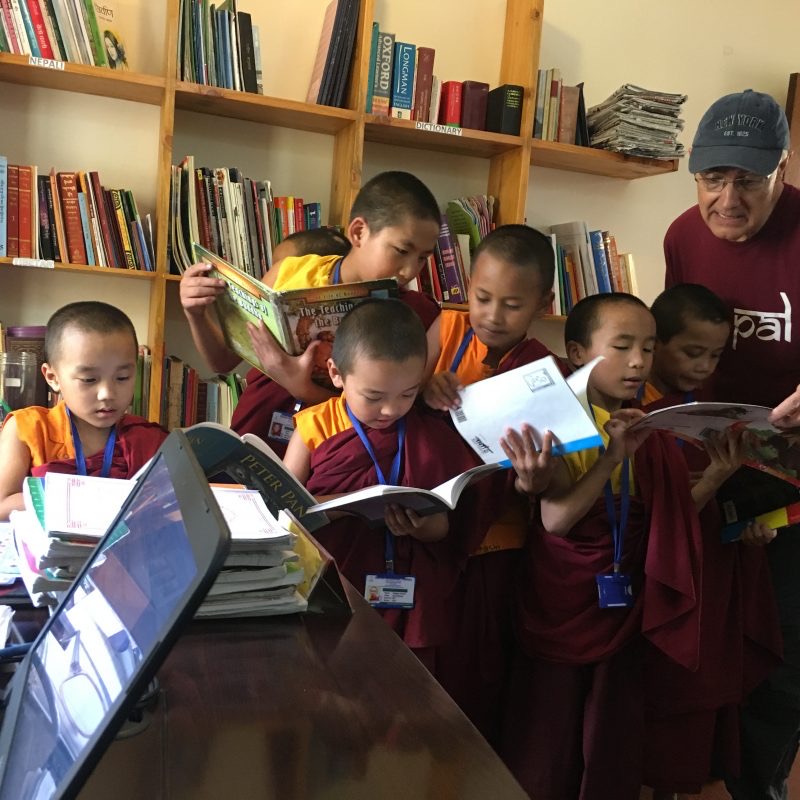 The Shechen School has 135 resident children many of whom come from impoverished areas in Nepal. A well-rounded education is offered, including subjects such as Mathematics and Science, English, reading and writing in English, Nepali, and Tibetan, and of course, Buddhist studies. The support from Edmond, and Altruistic Odyssey, as well as from other donors, has made a huge difference, enabling us to supply the school with a library room and books, and an equipped computer room. Read more about Shechen School in our December 2017 newsletter.
The Shechen School has 135 resident children many of whom come from impoverished areas in Nepal. A well-rounded education is offered, including subjects such as Mathematics and Science, English, reading and writing in English, Nepali, and Tibetan, and of course, Buddhist studies. The support from Edmond, and Altruistic Odyssey, as well as from other donors, has made a huge difference, enabling us to supply the school with a library room and books, and an equipped computer room. Read more about Shechen School in our December 2017 newsletter.
Lay Ching Koay and the Penang Dharma Friends have also undertaken an impressive project to help the young monks. For the sixth consecutive year, Lay Ching has gathered together a group of 140 donors — friends, families, friends of friends — to collectively sponsor 49 Shechen monks annually. These sponsorships provide them with food, medical care, clothing, as well as support the cost of their training and education.
Please consider becoming a sponsor for one of the children, or a monk or nun, either as an individual or by gathering a group of friends together. An annual sponsorship is only $250.
Create a group of sponsors, like the Penang Dharma Friends. If we tell two friends, and they tell two friends, quickly we have a collective sharing a common inspiration. As they say, many drops make an ocean.
PLEASE GIVE
Shechen Nuns Through the Lens
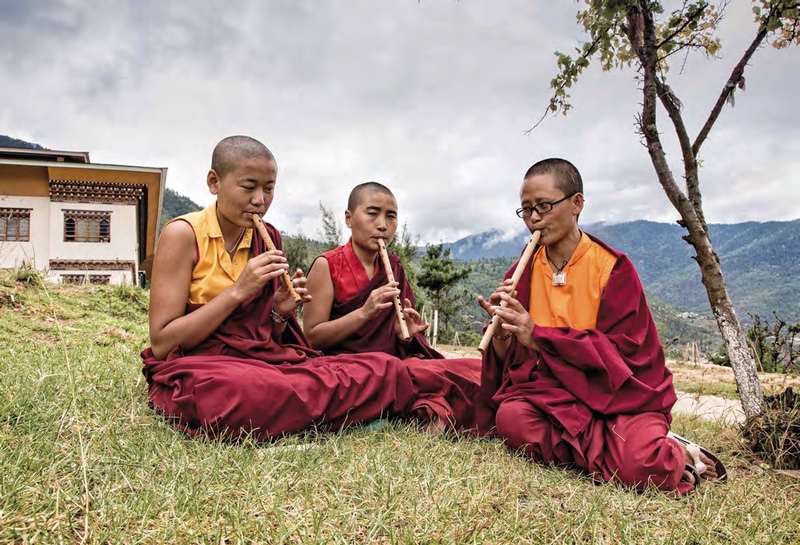
Martine Michaud, a Canadian photographer based in Montreal, spent many months in Bhutan and took photographs of the nuns of Shechen Orgyen Chodzong in Sissinang. The result is a beautiful book of images, stories and text about the lives of the nuns and their activities. With this collection of 140 photos, Martine Michaud looks at a world of silence, joy, laughter, meditation, study and religious life.
The Heritieres de Bouddha has a preface by Matthieu Ricard and is published in French by MishoPhoto http://www.mishophoto.com/
To order a copy contact info@mishophoto.com
Other Links
For continuing news please regularly visit our website where you can sponsor a monk or nun, donate to one of our projects, request prayers and find new information and photos. Current photos and news can also be found on our Facebook page.
